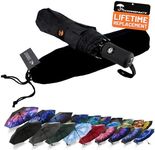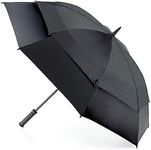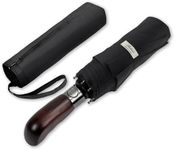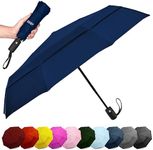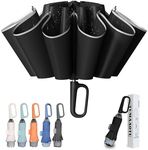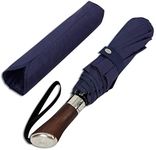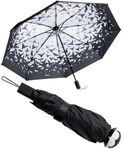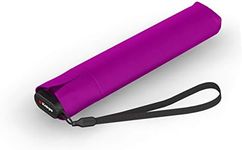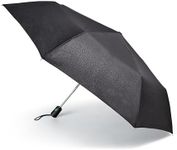Buying Guide for the Best Folding Umbrellas
Choosing the right folding umbrella involves considering various factors that will ensure it meets your needs, whether it's for daily use, travel, or occasional rainy days. Folding umbrellas are popular for their compact size and convenience, but not all are created equal. Understanding the key specifications will help you make an informed decision and find an umbrella that offers the right balance of portability, durability, and protection from the elements.Size and PortabilitySize and portability are crucial when selecting a folding umbrella, as they determine how easy it is to carry and store. Folding umbrellas are designed to be compact, making them ideal for travel or daily commuting. They typically range from small, pocket-sized models to larger ones that offer more coverage. If you need an umbrella that fits easily into a handbag or backpack, opt for a smaller, more compact model. However, if you prioritize coverage over portability, a slightly larger folding umbrella might be more suitable.
Canopy MaterialThe canopy material of a folding umbrella affects its durability and water resistance. Common materials include polyester, nylon, and pongee. Polyester is lightweight and dries quickly, making it a popular choice for everyday use. Nylon is strong and offers good water resistance, while pongee is known for its smooth texture and durability. Consider your typical weather conditions and how often you'll use the umbrella. For frequent use in heavy rain, a more durable material like pongee might be preferable.
Frame ConstructionThe frame construction of a folding umbrella determines its strength and ability to withstand wind. Frames are usually made from materials like aluminum, steel, or fiberglass. Aluminum is lightweight and rust-resistant, making it ideal for portability. Steel is heavier but offers more strength, while fiberglass is both strong and flexible, providing excellent wind resistance. If you live in a windy area, a fiberglass frame might be the best choice. For general use, aluminum offers a good balance of weight and durability.
Opening MechanismThe opening mechanism of a folding umbrella can be manual, automatic, or semi-automatic. Manual umbrellas require you to push the canopy open and closed, which can be more reliable but less convenient. Automatic umbrellas open with the push of a button, offering quick deployment, which is useful when you need to open it quickly. Semi-automatic umbrellas may open automatically but require manual closing. Consider how often you'll need to open and close the umbrella quickly and choose a mechanism that suits your lifestyle.
Wind ResistanceWind resistance is an important factor if you live in an area prone to strong winds. Some folding umbrellas are designed with vented canopies or reinforced frames to withstand gusts without inverting. Look for features like double-canopy designs or flexible ribs that can bend without breaking. If you frequently encounter windy conditions, investing in a wind-resistant umbrella will ensure it lasts longer and provides better protection.
Handle DesignThe handle design of a folding umbrella affects comfort and grip. Handles can be straight, curved, or ergonomic, and are made from materials like plastic, rubber, or wood. A comfortable grip is important, especially if you plan to use the umbrella for extended periods. Ergonomic handles provide better grip and comfort, while rubberized handles offer non-slip properties. Consider how the umbrella feels in your hand and choose a handle design that offers comfort and ease of use.

